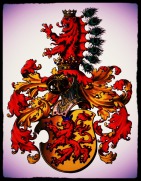Middle East/Asia
1798. Order of Malta. Ferdinand Hompesch 30 Tari, KM-345.3, DAV-1611b, Schembri-3. A striking, one-year type that is believed to have been struck by the French during their occupation, featuring the armored bust of Ferdinand Hompesch and crowned imperial eagle. Broad, with incredibly original surfaces that glisten with an exciting amount of mint luster and minor, yet hardly disturbing adjustment marks. The reverse is sublime with highlights in a delicate shade of antique gold that are woven through much of the devices and produce a warm glow. Currently the finest-known certified specimen of this type, and highly engaging as such. NGC MS-63.
Yemen. Al-Mutawakkil Yahya bin Muhammad, as Imam and King. AH 1344 (1925-1926) Imadi Rial, AH 1344 (1925). KM-Y-7. Struck over a number of years without changing the date of this coin, this crown sized coin is very well produced and preserved. Silky luster and problem free surfaces. It is the finest specimen graded PCGS MS-67+.
Yemen. Al-Mutawakkil Yahya bin Muhammad, as Imam and King. AH 1344 (1925-1926) Imadi Rial, AH 1344 (1925). KM-Y-7. Struck over a number of years without changing the date of this coin, this crown sized coin is very well produced and preserved. Silky luster and problem free surfaces. It is the finest specimen graded PCGS MS-66+.
1941-H. Sarawak - Charles V Brooke Type II, 1941-H Specimen One Cent - A superb example of this key SE Asian rarity, fully brilliant red and with
superb details. Sarawak was a former British Protectorate located in present-day Malaysia from 1841 to 1941 before becoming a British Crown Colony after a brief period of Japanese occupation.
The 1941-H One Cent, being the last year of issue known to exist, is survived by approximately 50 pieces extant. Remick (1971) wrote that the few surviving examples mostly turned up in England with
the issue being unknown in Sarawak suggesting that the coins never made it there. It has been suggested that the ship carrying the coins had sunk on the way to Sarawak as there was a heavy Japanese
naval presence in the area at the time.
Alternatively, the issue might have simply been melted down as there was a lot of demand for copper at the time for the war effort and as Sarawak had fallen to
Japanese forces by December/1941. This makes it unclear how most extant examples have survived. PCGS certified SP-66 RD.









